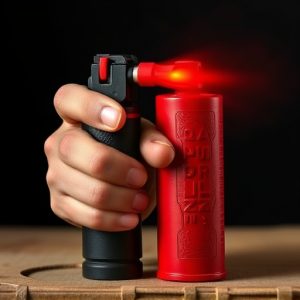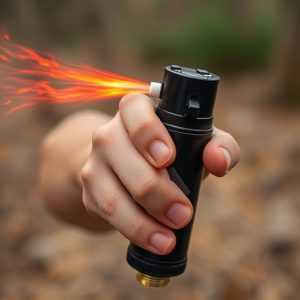Civilian Protection: Exploring Pepper Spray Delivery Methods and Legal Considerations
Exploring diverse best pepper spray delivery methods is crucial for effective civilian protection. W…….
Exploring diverse best pepper spray delivery methods is crucial for effective civilian protection. While aerosol cans offer wide coverage, they require precise aiming. Markers and ballistic devices provide improved control and longer ranges respectively. Safety measures stress responsible handling, storage out of children's reach, and adherence to local regulations. Understanding the legal landscape, varying by region, is essential to avoid issues. Best practices include training, proper use techniques, secure storage, and regular maintenance.
“In today’s world, personal safety is paramount, especially for civilians seeking effective self-defense tools. One such option gaining popularity is inflammatory spray, particularly pepper spray, known for its ability to incapacitate assailants temporarily. This article delves into the essentials of understanding and utilizing inflammatory sprays, focusing on delivery methods and legal aspects. We’ll explore the pros and cons of various pepper spray options, guiding civilians toward informed decisions regarding their best defense choices, with a special emphasis on the most efficient delivery methods.”
- Understanding Inflammatory Sprays: The Basics and Safety Measures
- Exploring Pepper Spray Delivery Methods: Pros and Cons
- Legal Considerations and Best Practices for Civilian Use of Inflammatory Sprays
Understanding Inflammatory Sprays: The Basics and Safety Measures
Inflammatory sprays, commonly known as pepper spray, are a popular choice for personal protection among civilians due to their effectiveness and ease of use. These sprays contain capsaicin, the active ingredient found in chili peppers, which irritates the eyes, nose, and respiratory system when inhaled, causing temporary incapacitation. Understanding how these sprays work and implementing proper safety measures is paramount for responsible use.
When considering the best pepper spray delivery methods, factors like range, accuracy, and ease of application come into play. Common delivery mechanisms include aerosol cans, markers, and ballistc devices. Aerosol cans are widely used due to their simplicity; they offer a wide spray pattern but require proper aim for maximum effectiveness. Markers provide better control and accuracy, allowing the user to target specific areas, while ballistic devices, though less common, offer unique advantages such as longer range and reduced wind impact. Safety precautions include storing pepper spray out of reach of children and ensuring proper disposal according to local regulations to prevent environmental harm.
Exploring Pepper Spray Delivery Methods: Pros and Cons
In the quest for effective civilian protection, exploring different pepper spray delivery methods is crucial. Among the various options, the best pepper spray delivery methods offer a balance between ease of use, rapid effectiveness, and reliability in high-stress situations. Jet-powered or aerosol sprays are popular choices due to their range and ability to quickly incapacitate an assailant. However, these methods have drawbacks such as limited accuracy and potential wind sensitivity, which can reduce their effectiveness in certain scenarios.
On the other hand, pepper spray with a direct stream or pump mechanism provides better control and accuracy, making it ideal for close-quarters combat. While they may not offer the same range as aerosol sprays, these methods ensure that the user can target specific areas effectively. However, they require proper training to use without causing unintended harm. Understanding the pros and cons of each delivery method is essential for civilians seeking to protect themselves, enabling them to make informed decisions based on their specific needs and environment.
Legal Considerations and Best Practices for Civilian Use of Inflammatory Sprays
When considering the civilian use of inflammatory sprays, such as pepper spray, it’s crucial to understand the legal landscape surrounding their possession and deployment. Laws vary widely by jurisdiction, with some regions allowing open carry while others restrict it to specific circumstances or require permits. Additionally, there are rules about the types of spray permitted, concentration levels, and acceptable uses—including self-defense scenarios and law enforcement aid. It’s essential for civilians to research and comply with local regulations to avoid legal repercussions.
Best practices for using inflammatory sprays include ensuring proper training, understanding the spray’s delivery method (like best pepper spray delivery methods), and knowing your surroundings. Always aim low, towards sensitive facial areas, to neutralize the target without causing serious injury. Practice safe handling and storage, keeping it out of reach of children and unauthorized individuals. Regularly inspect and maintain your spray device, ensuring its functionality for when you may need it most.
Inflammatory sprays, especially pepper spray, offer civilians powerful tools for self-defense. By understanding the basics, exploring delivery methods like aerosol and marking sprays, and navigating legal considerations, individuals can make informed choices. Adhering to best practices ensures safety while empowering users with effective protection. When selecting a pepper spray, consider the best delivery method for your needs and always prioritize responsible usage.


